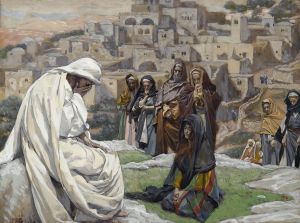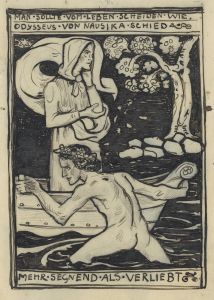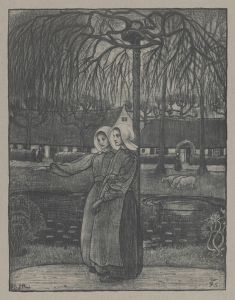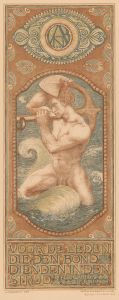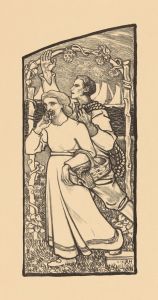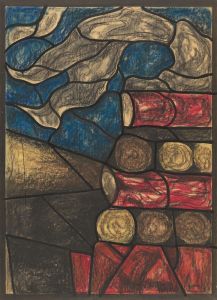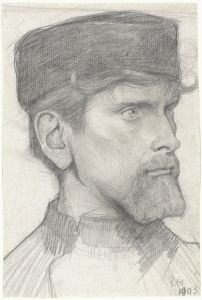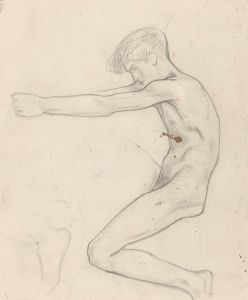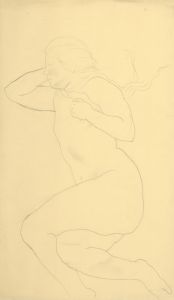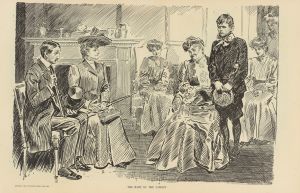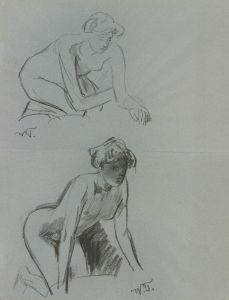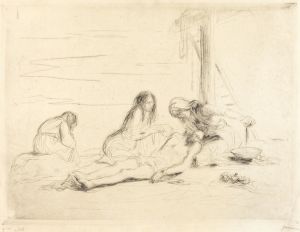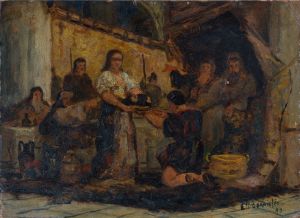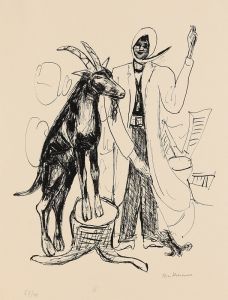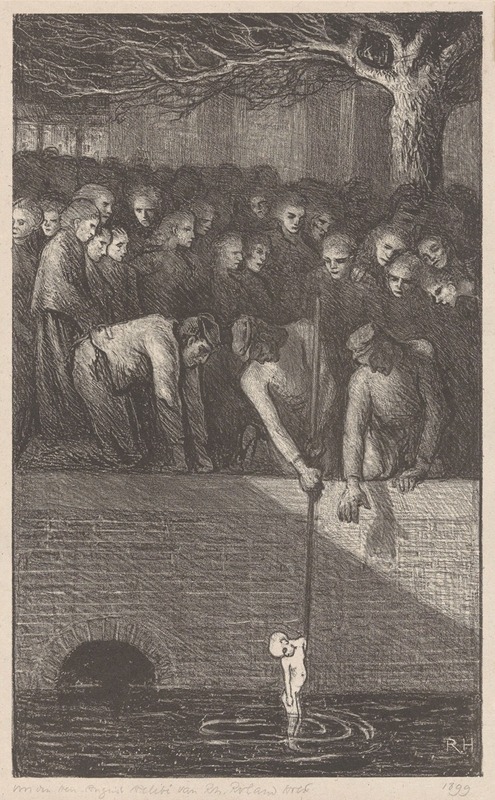
Man die een babylijk uit een gracht haalt
A hand-painted replica of Richard Nicolaüs Roland Holst’s masterpiece Man die een babylijk uit een gracht haalt, meticulously crafted by professional artists to capture the true essence of the original. Each piece is created with museum-quality canvas and rare mineral pigments, carefully painted by experienced artists with delicate brushstrokes and rich, layered colors to perfectly recreate the texture of the original artwork. Unlike machine-printed reproductions, this hand-painted version brings the painting to life, infused with the artist’s emotions and skill in every stroke. Whether for personal collection or home decoration, it instantly elevates the artistic atmosphere of any space.
Richard Nicolaüs Roland Holst was a prominent Dutch artist known for his contributions to the Symbolist movement in the late 19th and early 20th centuries. Born on December 4, 1868, in Amsterdam, Roland Holst was a versatile artist who engaged in various forms of art, including painting, drawing, and printmaking. He was also a significant figure in the Dutch art scene, contributing to the development of modern art in the Netherlands.
One of his notable works is "Man die een babylijk uit een gracht haalt," which translates to "Man retrieving a baby's body from a canal." This painting is a poignant example of Roland Holst's ability to convey deep emotional and social themes through his art. The painting depicts a somber scene where a man is shown pulling the lifeless body of an infant from the water, a moment that captures both tragedy and the harsh realities of life.
Roland Holst's work often reflected his interest in social issues and his desire to address them through art. This particular painting can be seen as a commentary on the social conditions of the time, possibly highlighting issues such as poverty, neglect, or the fragility of life. The use of dark and muted colors in the painting enhances the somber mood, drawing the viewer into the gravity of the scene.
Throughout his career, Roland Holst was influenced by various art movements and figures. He was associated with the Tachtigers, a group of young Dutch artists and writers who sought to bring about a cultural renewal in the Netherlands. They emphasized individual expression and the importance of art as a reflection of personal experience and emotion. Roland Holst's work, including "Man die een babylijk uit een gracht haalt," embodies these principles through its emotive power and symbolic depth.
In addition to his painting, Roland Holst was also a respected teacher and writer. He served as a professor at the Rijksakademie van Beeldende Kunsten in Amsterdam, where he influenced a new generation of artists. His writings on art and society further demonstrate his commitment to using art as a means of social commentary and change.
Roland Holst's legacy is marked by his dedication to exploring the human condition and the societal issues of his time through his art. "Man die een babylijk uit een gracht haalt" remains a significant work within his oeuvre, exemplifying his skill in combining technical proficiency with profound thematic content. The painting continues to be studied and appreciated for its emotional impact and its reflection of the social consciousness that characterized much of Roland Holst's work.
Richard Nicolaüs Roland Holst passed away on December 31, 1938, leaving behind a body of work that continues to resonate with audiences and inspire discussions on the role of art in society. His contributions to Dutch art and his exploration of complex themes ensure his place as a significant figure in the history of modern art.





